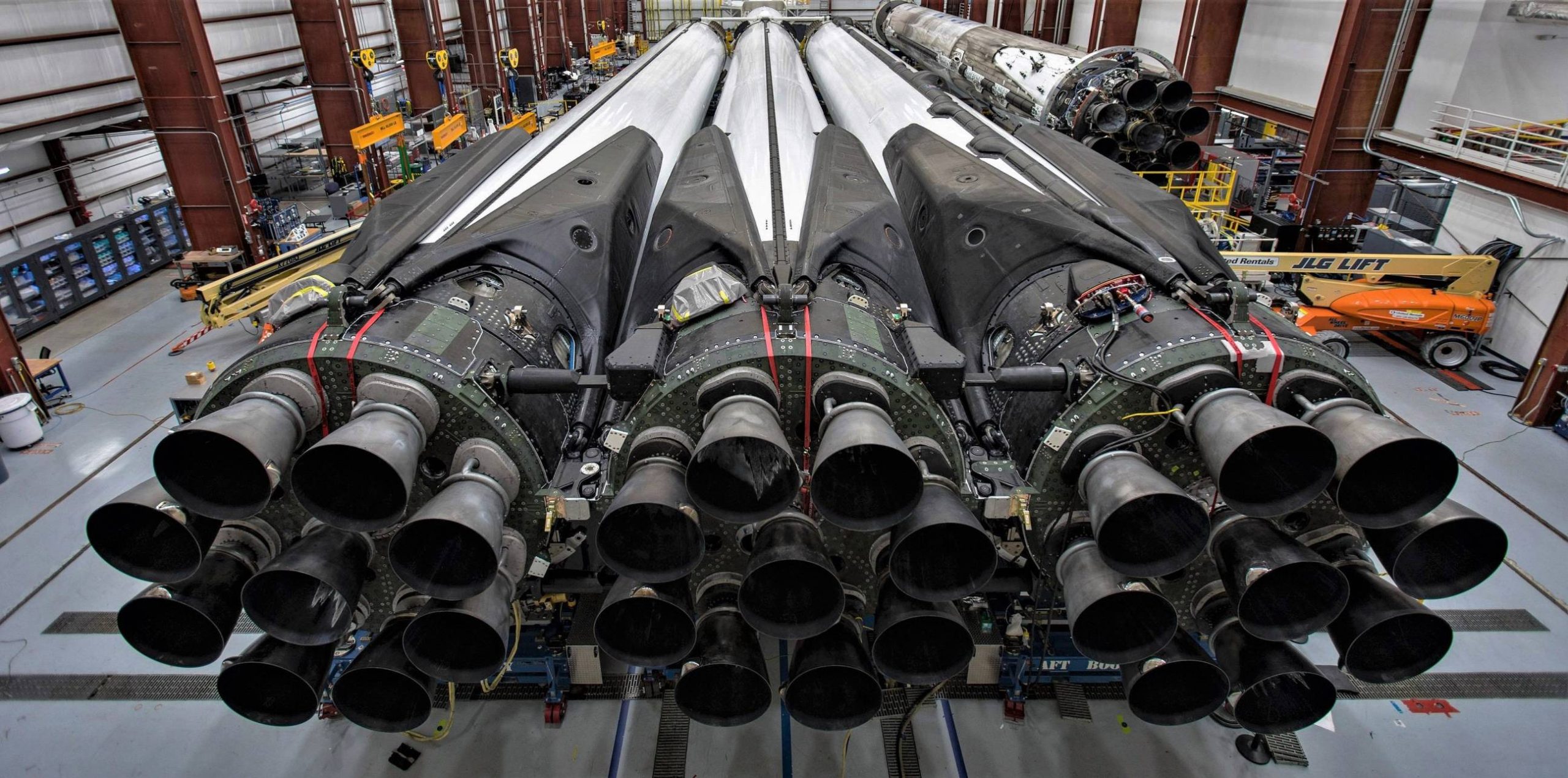
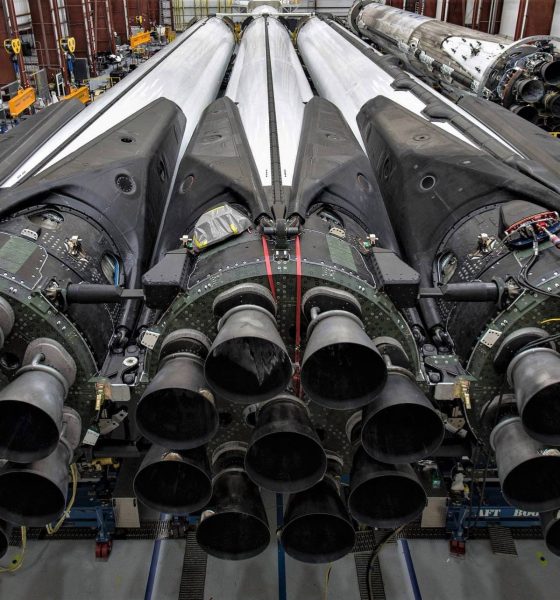
News
SpaceX’s first Falcon Heavy launch in three years eyes late-October liftoff
For the second time in 2022, SpaceX’s Falcon Heavy rocket has a firm launch date for the first time in more than three years.
Cursed by a seemingly relentless flood of delays impacting almost every one of the rocket’s payloads, Falcon Heavy made it within three or four months of ending its launch drought as recently as June 2022. At the time, the rocket was more or less ready to begin assembly, but NASA announced late that month that the Jet Propulsion Laboratory (JPL) and supplier Maxar had failed to finish qualifying software needed to power its Psyche spacecraft. Designed to journey to and enter orbit around the asteroid 16 Psyche, the complex trajectory required to reach it constrained the mission to a launch window sometime between August and October.
When JPL and Maxar were unable to properly test the spacecraft’s software in time for that window, they were forced to stand down and wait until the next earliest window, which begins in July 2023. That left Falcon Heavy with three more possible payloads to launch in 2022, but all three were chronically delayed and there was little reason to believe that even one of them would be ready to launch before 2023. However, Falcon Heavy’s single most delayed payload appears to have made a breakthrough, giving the most powerful rocket currently in operation at least one more shot at a 2022 launch.
Continuing an excellent series of reports tracking Falcon Heavy’s never-ending US military payload delays, Spaceflight Now broke the news with an official statement from the US Space Force, which confirmed that an unspecified industry partner had finally resolved payload problems that have delayed the military’s USSF-44 mission by two years. More importantly, the USSF spokesperson revealed a specific target of October 28th.
The US military has repeatedly offered implausible launch targets for USSF-44 with little to no official explanation for the mission’s delays, making it reasonable to appraise any specific launch date much like a boy crying wolf. But this particular target, announced within the same month as its date, is a bit more believable on its own.
Thankfully, it’s not on its own. On October 7th, SpaceX sent out an email confirming that Falcon Heavy is scheduled to launch USSF-44 sometime in October and asking members of the media to register for press site access and remote camera setup opportunities. It’s possible that the rocket or USSF-44 satellites will run into issues and trigger additional delays, but a press accreditation email is about as close as one can get to a believable guarantee that a secretive US military payload is on track for a SpaceX launch scheduled more than a week or so in the future.
The mission’s next major step forward will be the assembly of Falcon Heavy inside SpaceX’s main hangar at its NASA Kennedy Space Center LC-39A pad. Photos SpaceX shared last month and earlier this month of preparations for Crew-5, Falcon 9’s eighth successful astronaut launch, show that at least two of the four main stages that make up Falcon Heavy are already inside that hangar. One of two new Falcon Heavy side boosters was clearly spotted on September 30th.
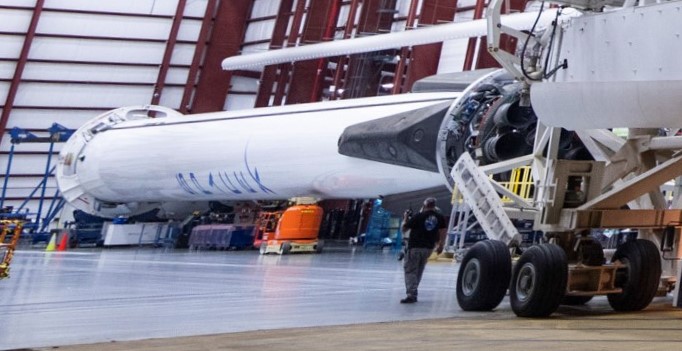
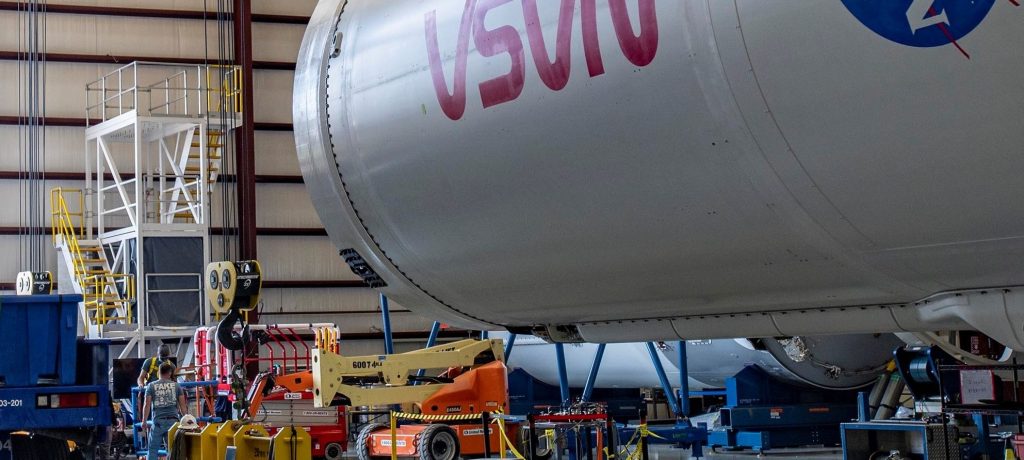
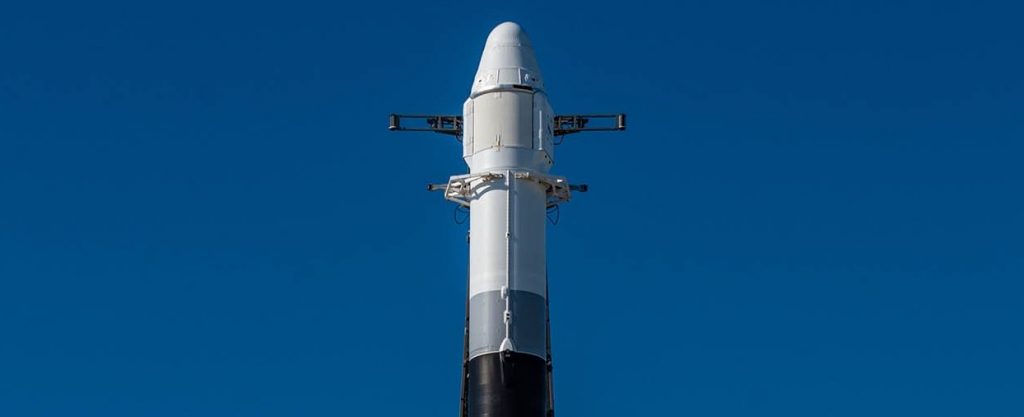
The rocket’s expendable upper stage was also clearly visible in a September 23rd photo. Ordinarily, Falcon upper stages are nearly indistinguishable from each other, but the upper stage stored behind the Crew-5 upper stage in the foreground features a unique grey band around the bottom of its airframe. In July 2019, SpaceX tested another Falcon 9 upper stage with the same grey band, which a spokesperson explained was meant to improve the rocket’s longevity in orbit.
Long orbital coasts of six or more hours are necessary for some of the most challenging launch trajectories. Direct-to-geostationary launches are the most common type of mission to require long coast capabilities and are often demanded by the US military. The grey band’s purpose is to increase the amount of heating absorbed from sunlight to warm the liquid kerosene (RP-1) fuel contained within that part of the rocket. When it gets too cold, kerosene – which freezes at a much higher temperature than Falcon’s liquid oxygen oxidizer – becomes viscous and slush-like before it freezes solid. If ingested, slushy fuel would likely prevent ignition or destroy the upper stage’s Merlin engine.
USSF-44 will be SpaceX’s first direct geostationary launch attempt, explaining why the grey band has reappeared more than three years after its first test. Coincidentally, Falcon Heavy’s third and latest launch occurred in June 2019, just one month before that upper stage test. 40 months later, the rocket might finally launch again, and it will do so by attempting what is likely SpaceX’s most difficult customer mission to date. To enable the high performance required for the mission, USSF-44 will also intentionally expend a Falcon Heavy booster for the first time. The rocket’s two new side boosters will boost back to Florida and land side by side at LZ-1 and LZ-2, but its new center core will be expended after a single flight.
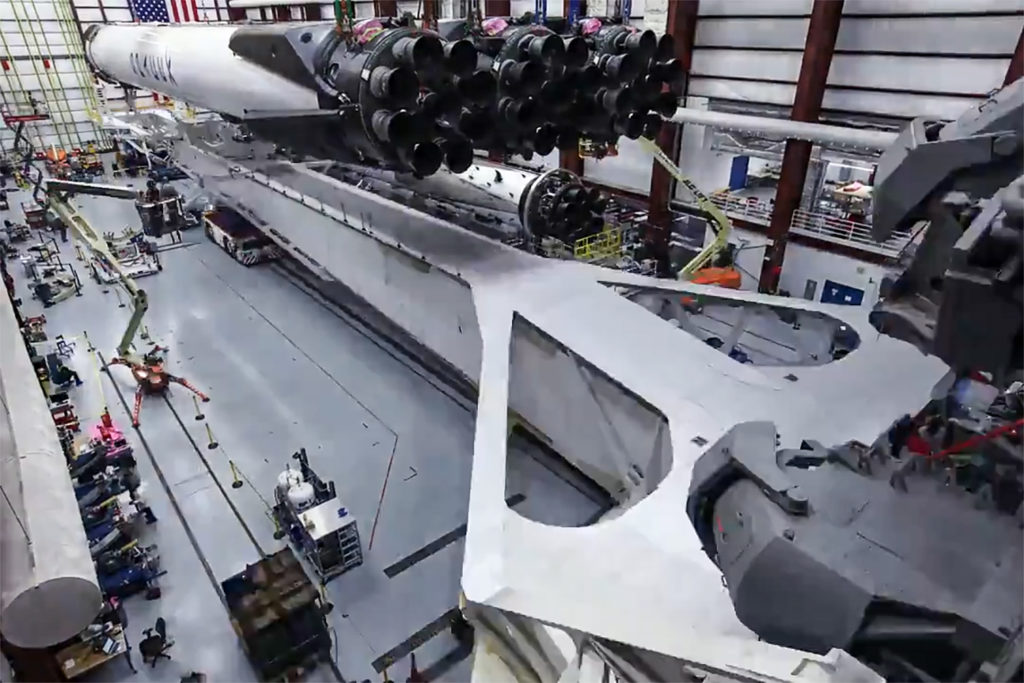
SpaceX has already finished converting Pad 39A’s mobile transporter/erector, which was previously set up for single-core Falcon 9 rockets. The T/E will eventually roll inside the pad’s integration hangar, confirming that Falcon Heavy has been fully assembled and is about to be installed on the structure. The rocket will then be rolled out to the pad and brought vertical for static fire testing, a process that will likely begin at least a week before the current October 28th launch target.
If testing is successful, Falcon Heavy will return to the hangar, have its fairing and USSF-44 payload installed, and roll out to the pad one last time. Stay tuned for updates on that ongoing process.

Elon Musk
SpaceX’s Starship FL launch site will witness scenes once reserved for sci-fi films
A Starship that launches from the Florida site could touch down on the same site years later.
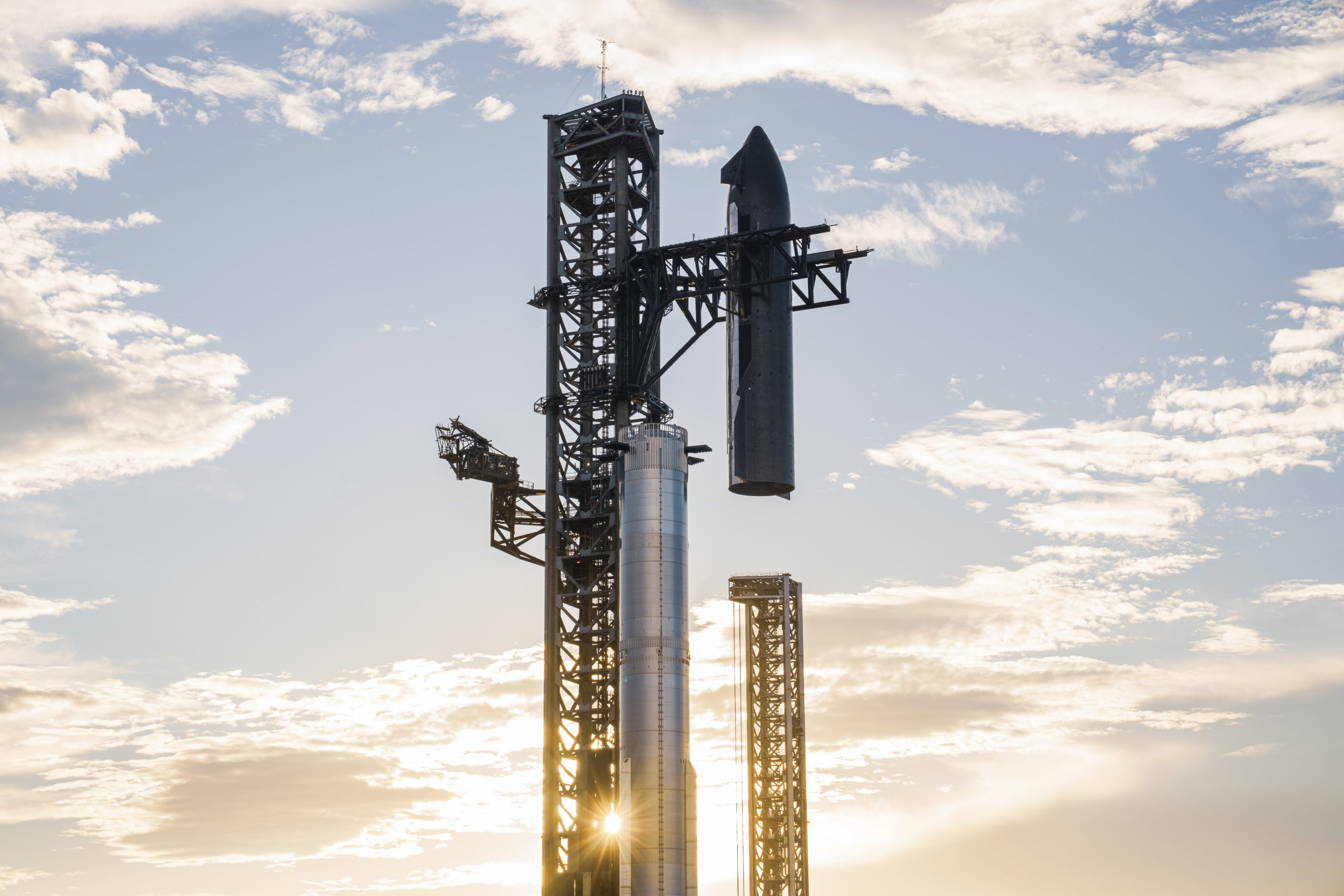
The Department of the Air Force (DAF) has released its Final Environmental Impact Statement for SpaceX’s efforts to launch and land Starship and its Super Heavy booster at Cape Canaveral Space Force Station’s SLC-37.
According to the Impact Statement, Starship could launch up to 76 times per year on the site, with Super Heavy boosters returning within minutes of liftoff and Starship upper stages landing back on the same pad in a timeframe that was once only possible in sci-fi movies.
Booster in Minutes, Ship in (possibly) years
The EIS explicitly referenced a never-before-seen operational concept: Super Heavy boosters will launch, reach orbit, and be caught by the tower chopsticks roughly seven minutes after liftoff. Meanwhile, the Starship upper stage will complete its mission, whether a short orbital test, lunar landing, or a multi-year Mars cargo run, and return to the exact same SLC-37 pad upon mission completion.
“The Super Heavy booster landings would occur within a few minutes of launch, while the Starship landings would occur upon completion of the Starship missions, which could last hours or years,” the EIS read.
This means a Starship that departs the Florida site in, say, 2027, could touch down on the same site in 2030 or later, right beside a brand-new stack preparing for its own journey, as noted in a Talk Of Titusville report. The 214-page document treats these multi-year round trips as standard procedure, effectively turning the location into one of the world’s first true interplanetary spaceports.
Noise and emissions flagged but deemed manageable
While the project received a clean bill of health overall, the EIS identified two areas requiring ongoing mitigation. Sonic booms from Super Heavy booster and Starship returns will cause significant community annoyance” particularly during nighttime operations, though structural damage is not expected. Nitrogen oxide emissions during launches will also exceed federal de minimis thresholds, prompting an adaptive management plan with real-time monitoring.
Other impacts, such as traffic, wildlife (including southeastern beach mouse and Florida scrub-jay), wetlands, and historic sites, were deemed manageable under existing permits and mitigation strategies. The Air Force is expected to issue its Record of Decision within weeks, followed by FAA concurrence, setting the stage for rapid redevelopment of the former site into a dual-tower Starship complex.
SpaceX Starship Environmental Impact Statement by Simon Alvarez
News
Tesla Full Self-Driving (FSD) testing gains major ground in Spain
Based on information posted by the Dirección General de Tráfico (DGT), it appears that Tesla is already busy testing FSD in the country.
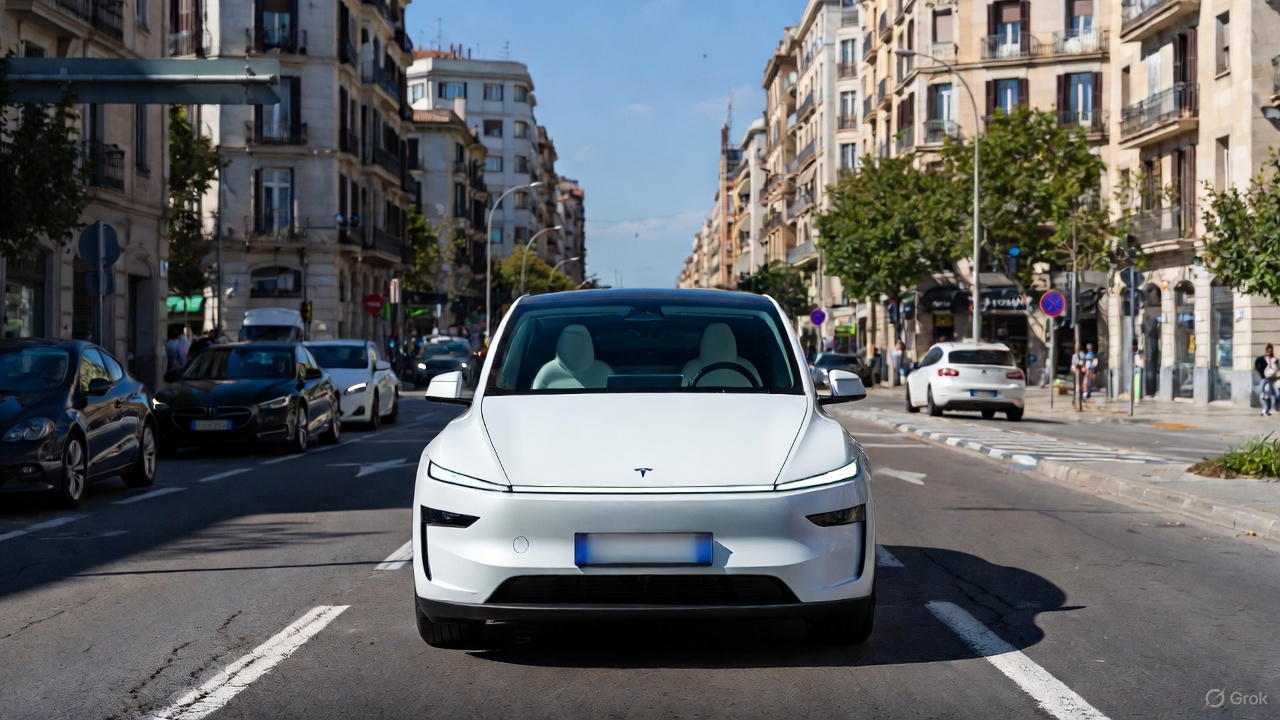
Tesla’s Full Self-Driving (Supervised) program is accelerating across Europe, with Spain emerging as a key testing hub under the country’s new ES-AV framework program.
Based on information posted by the Dirección General de Tráfico (DGT), it appears that Tesla is already busy testing FSD in the country.
Spain’s ES-AV framework
Spain’s DGT launched the ES-AV Program in July 2025 to standardize testing for automated vehicles from prototypes to pre-homologation stages. The DGT described the purpose of the program on its official website.
“The program is designed to complement and enhance oversight, regulation, research, and transparency efforts, as well as to support innovation and advancements in automotive technology and industry. This framework also aims to capitalize on the opportunity to position Spain as a pioneer and leader in automated vehicle technology, seeking to provide solutions that help overcome or alleviate certain shortcomings or negative externalities of the current transportation system,” the DGT wrote.
The program identifies three testing phases based on technological maturity and the scope of a company’s operations. Each phase has a set of minimum eligibility requirements, and applicants must indicate which phase they wish to participate in, at least based on their specific technological development.
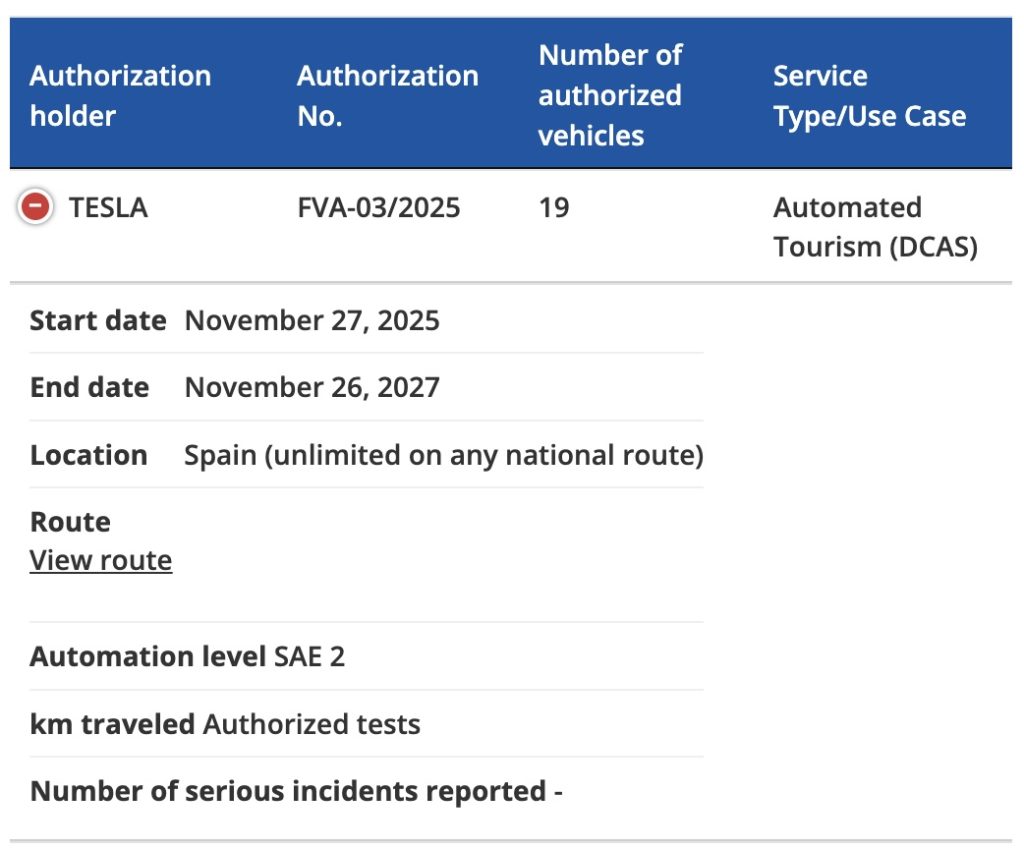
Tesla FSD tests
As noted by Tesla watcher Kees Roelandschap on X, the DGT’s new framework effectively gives the green flight for nationwide FSD testing. So far, Tesla Spain has a total of 19 vehicles authorized to test FSD on the country’s roads, though it would not be surprising if this fleet grows in the coming months.
The start date for the program is listed at November 27, 2025 to November 26, 2027. The DGT also noted that unlimited FSD tests could be done across Spain on any national route. And since Tesla is already in Phase 3 of the ES-AV Program, onboard safety operators are optional. Remote monitoring would also be allowed.
Tesla’s FSD tests in Spain could help the company gain a lot of real-world data on the country’s roads. Considering the scope of tests that are allowed for the electric vehicle maker, it seems like Spain would be one of the European countries that would be friendly to FSD’s operations. So far, Tesla’s FSD push in Europe is notable, with the company holding FSD demonstrations in Germany, France, and Italy. Tesla is also pushing for national approval in the Netherlands in early 2026.
News
Tesla FSD V14.2.1 is earning rave reviews from users in diverse conditions
Tesla’s Full Self-Driving (Supervised) software continues its rapid evolution, with the latest V14.2.1 update drawing widespread praise.

Tesla’s Full Self-Driving (Supervised) software continues its rapid evolution, with the latest V14.2.1 update drawing widespread praise for its smoother performance and smarter decision-making.
Videos and firsthand accounts from Tesla owners highlight V14.2.1 as an update that improves navigation responsiveness, sign recognition, and overall fluidity, among other things. Some drivers have even described it as “more alive than ever,” hinting at the system eventually feeling “sentient,” as Elon Musk has predicted.
FSD V14.2.1 first impressions
Early adopters are buzzing about how V14.2.1 feels less intrusive while staying vigilant. In a post shared on X, Tesla owner @LactoseLunatic described the update as a “huge leap forward,” adding that the system remains “incredibly assertive but still safe.”
Another Tesla driver, Devin Olsenn, who logged ~600 km on V14.2.1, reported no safety disengagements, with the car feeling “more alive than ever.” The Tesla owner noted that his wife now defaults to using FSD V14, as the system is already very smooth and refined.
Adverse weather and regulatory zones are testing grounds where V14.2.1 shines, at least according to testers in snow areas. Tesla watcher Sawyer Merritt shared a video of his first snowy drive on unplowed rural roads in New Hampshire, where FSD did great and erred on the side of caution. As per Merritt, FSD V14.2.1 was “extra cautious” but it performed well overall.
Sign recognition and freeway prowess
Sign recognition also seemed to show improvements with FSD V14.2.1. Longtime FSD tester Chuck Cook highlighted a clip from his upcoming first-impressions video, showcasing improved school zone behavior. “I think it read the signs better,” he observed, though in standard mode, it didn’t fully drop to 15 mph within the short timeframe. This nuance points to V14.2.1’s growing awareness of temporal rules, a step toward fewer false positives in dynamic environments.
FSD V14.2.1 also seems to excel in high-stress highway scenarios. Fellow FSD tester @BLKMDL3 posted a video of FSD V14.2.1 managing a multi-lane freeway closure due to a police chase-related accident. “Perfectly handles all lanes of the freeway merging into one,” the Tesla owner noted in his post on X.
FSD V14.2.1 was released on Thanksgiving, much to the pleasant surprise of Tesla owners. The update’s release notes are almost identical to the system’s previous iteration, save for one line item read, “Camera visibility can lead to increased attention monitoring sensitivity.”









